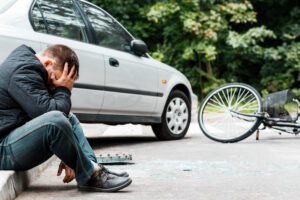Cycling is a popular mode of transportation and recreational activity in Virginia, offering individuals an eco-friendly and health-conscious way to get around. However, riding a bicycle at night poses unique challenges and requires extra precautions to ensure the safety of both cyclists and motorists. At NovaLegalGroup, P.C., we understand the importance of promoting bicycle safety, and we are committed to providing valuable information and legal assistance to the cycling community in Virginia. In this article, we will discuss essential safety tips to help you avoid bicycle accidents while riding at night in Virginia, along with the specific requirements and regulations that cyclists must adhere to.
Wear High-Visibility Clothing:
One of the most effective ways to enhance your visibility while riding at night is to wear bright, reflective clothing. Opt for fluorescent or neon colors that can stand out against the dark background. Reflective materials on your clothing, helmet, shoes, and bicycle will further increase your visibility to motorists.
Equip Your Bicycle with Lights:
Virginia law requires bicycles to be equipped with a white headlight that is visible from at least 500 feet ahead and a red rear reflector or taillight visible from at least 600 feet behind. Investing in high-quality lights will significantly improve your visibility on the road and reduce the risk of collisions with motor vehicles.
Use Reflective Accessories:
In addition to lights, affixing reflective accessories to your bicycle can greatly enhance your visibility. Attach reflective tape to your pedals, wheel rims, and frame to create additional points of reflection. Reflective ankle bands and vests are also excellent choices for enhancing visibility.
Be Mindful of Road Conditions:
Nighttime cycling requires extra caution due to reduced visibility. Keep an eye out for road hazards, such as potholes, debris, and uneven surfaces. Adjust your speed accordingly and maintain a firm grip on the handlebars to ensure stability and control.
Follow Traffic Laws:
As a cyclist, you are required to obey the same traffic laws as motorists in Virginia. This includes stopping at stop signs and traffic lights, yielding right-of-way, and using appropriate hand signals for turns. Adhering to traffic laws will help you predictably navigate the road and reduce the risk of accidents.
Be Predictable:
Making your intentions clear to motorists is crucial for preventing accidents. Signal your turns well in advance, and ride in a straight line to the best of your ability. Avoid sudden swerving or weaving between lanes, as it can confuse and surprise drivers.
Choose Well-Lit Routes:
Plan your cycling routes in advance and choose roads that are well-lit whenever possible. Avoid poorly lit areas or roads with inadequate shoulder space. Familiarize yourself with the road conditions and any potential hazards along your route to minimize surprises.
Stay Alert and Focused:
Riding at night requires heightened awareness and concentration. Avoid distractions such as headphones or mobile devices, as they can impede your ability to hear approaching vehicles or detect potential dangers. Keep your attention on the road and your surroundings at all times.
Ride Defensively:
While it is essential to follow traffic laws, it’s equally important to anticipate the actions of other road users. Be cautious when approaching intersections, and make eye contact with drivers to ensure they see you before proceeding. Assume that motorists may not see you and always prioritize your safety.
Consider Joining a Cycling Group:
Riding with others can provide an additional layer of safety, especially at night. Consider joining a local cycling group or participating in organized rides where experienced riders can provide guidance and support.
Virginia-Specific Bicycle Requirements:
In addition to the safety tips mentioned above, it is vital to understand the specific requirements and regulations for cyclists in Virginia. These include:
- Cyclists must ride as close to the right side of the road as practicable, except when preparing to turn left, passing another vehicle, or avoiding obstacles.
- Bicycles must have a functioning brake system that enables the operator to make the wheels skid on dry, level, clean pavement.
- Bicyclists must yield to pedestrians on sidewalks and shared-use paths.
- Cyclists under the age of 14 must wear a helmet that meets the standards of the American National Standards Institute (ANSI) or the Snell Memorial Foundation.
- Riding bicycles on sidewalks is generally prohibited in business districts unless otherwise indicated.
At NovaLegalGroup, P.C., we are dedicated to promoting bicycle safety and advocating for the rights of cyclists in Virginia. If you or a loved one has been involved in a bicycle accident, our experienced attorneys are here to help. Contact us today for a free consultation to discuss your case and explore your legal options. Together, we can work towards a safer and more cyclist-friendly Virginia.
Remember, by following these safety tips and understanding the requirements in Virginia, you can significantly reduce the risk of bicycle accidents while riding at night. Stay visible, ride responsibly, and enjoy the benefits of cycling while prioritizing your safety and the safety of others on the road.
